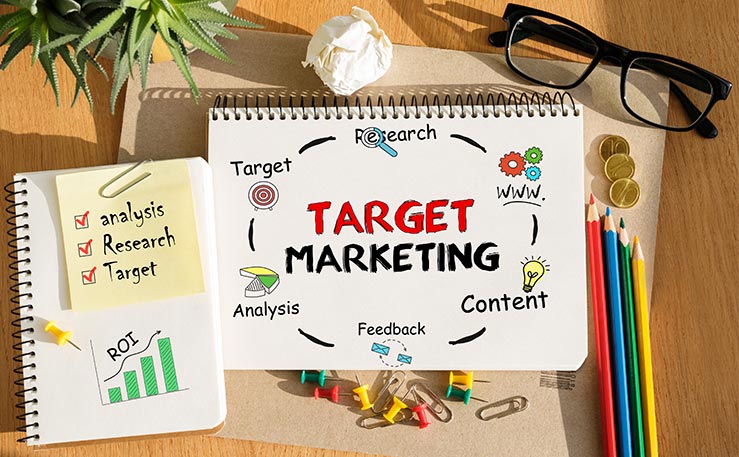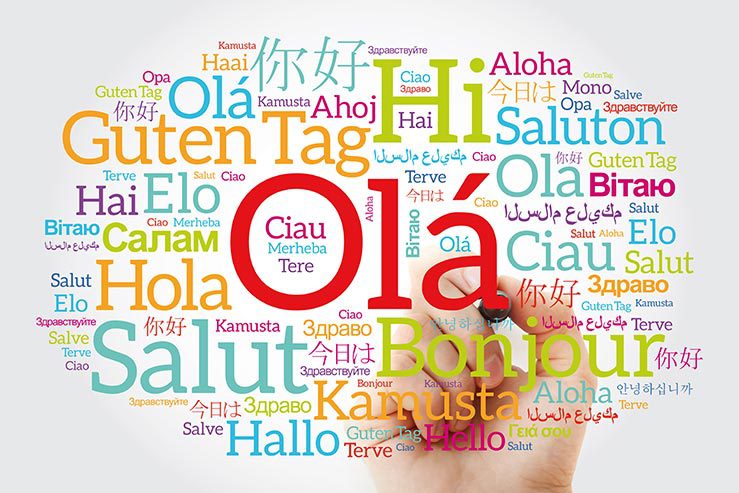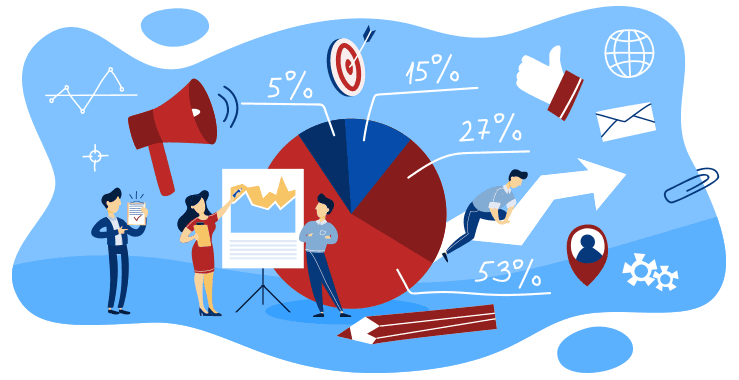
Article
Website Translation: 8 steps to internationalising your website
PUBLISHED:November 15, 2021
UPDATED:February 5, 2024
Website translation can be a difficult thing to implement. It requires a lot of research and preparation for what you’re about to undertake.
In this article, we hope to shed some light on the process of website translation. How you need to prepare and what actions to take to achieve your goals.
What is website translation?
Website translation is the process of taking your existing website and translating it into at least one other language.
The process itself can be quite involved, including the need for new website landing pages, content creation, and website design changes for improved UX.
But before you begin, there are some preliminary tasks which you should perform:
- Research
- Identifying your target audience
- Coding and other dev work
- Enhancing your local SEO
- Choosing website translation services
- Creating a strong brand identity through excellent web design and UX
- Having a great content strategy.
- Thinking about the content extraction process & your choice of CMS
Let’s look at these in more detail…
#1 Research, Research, and More Research
Why do you need website translation?
In a survey by CSA Research Group of 8,709 consumers in 29 countries, they found that 76% prefer purchasing products with information in their own language. This means that website translation is necessary in order to engage your consumers.
The same research also shows that 60% of consumers never buy from English-only websites.
So the stats are telling us that in order to be more successful with overseas sales, we should have our website translated into other languages. But which languages?
To answer this question you must engage in a round of market research and website reviews covering the following items:
- Your business goals
- Your website structure & content
- Traffic sources
- The current level of conversions/sales
- Demand for your services/products in other territories
- Potential competitors
Once you have data that gives real insight into who your website users are, plus information regarding the demand for services/products in other territories, you can put together a solid plan of action for translating your website into other languages.
#2 Identifying Your Target Audience
For any translation project to be successful, you must know your target audience and demographics. You can identify these groups with the data gathered from step one above.
Relevant data should include:
- Country of Residence
- Languages Spoken
- Age Demographics
Use this data to create user personas and engage in some competitive brand analysis to discover who your competitors are targeting.
Do you want to target GenZ in Germany, millennials in Argentina or digital natives in Japan? You need to know who your audience is and what they are interested in.
Website translation is a step towards personalization.
By giving the correct information in languages your consumers understand, you will increase engagement, trust and as a result improve conversions.
#3 Coding and Other Development Work
Once you’ve identified your audience and completed your research, you need to prepare your website from a code perspective.
Coding and other software development work will be an important step to becoming multilingual. Forming the basis of internationalization, localization, and translation.
Internationalization, or i18n, as it’s called in the coding world, is the process of transforming code through the following methods:
- Application review
- Dynamic UI expansion
- Coding for string localization (l10n)
- String extraction
- Resource file preparation
Unicode such as UTF-8, and UTF-16 will probably be your option for this work.
#4 Enhancing Your Local SEO
Once you’ve completed your research, identified your target audiences, and prepared your code, you’ll be enhancing your local SEO for your target locales.
The reason for optimising your local SEO is to have your website appear high on search engines such as Google.
The search engines which you target will be different for each territory, such as google.co.uk for the United Kingdom and google.es for Spain. Spain’s search engine is different from Mexico’s too, which is represented by google.com.mx.
Each language that you wish to translate your website into will need to be optimised for the local search engines in those markets.
#5 Choosing a Website Translation Service
The best website translation service that suits your needs will depend on your website CMS.
For example, Weglot is ideal for WordPress websites and uses automatic translation. Weglot has grown business through eCommerce translation and software solutions.
Tomedes is another recommended company that offers multilingual solutions for websites.
William Mamane, Chief Marketing Officer of Tomedes, states that:
‘Website translation services can turn your website into a multilingual one not just through translation but through design, content, and dev work as well. He says that it’s not just translation that a multilingual service can accommodate, but all aspects of building a multilingual website from scratch.’
Website translation specialists tend to offer multilingual SEO services alongside website translation.
No matter which company you choose, it’s recommended that you use a specialist independent translation service executed by professional translators.
#6 Improved Web Design and UX
You may think that revisiting your website design is not a preliminary step to website translation, but it is because when you’re thinking of creating a multilingual website, you want to be considering the use of global templates that appeal to an international audience.
It’s possible to utilise a global design template that will accommodate right-to-left navigation as well as left-side vertical navigation, depending on your UX build.
Global templates will help keep your brand consistent across multiple territories whilst delivering the correct UX for each type of user.
#7 Have a Good Content Strategy
It’s not just design and UX that matters, of course, there’s also content, and Content is King.
With localized websites comes localized content. Localized content will be key to the success of your new multilingual website and even your overall marketing strategy.
With a well-executed multilingual website, you can host landing pages that contain unique content in a variety of languages. Each targets the local users perfectly for any given service or product.
The same goes for your blog content. You can cover UK-related news items for UK-based users, while the Brazilian site hosts content focussed on Brazil written in Portuguese.
And you don’t even have to limit your content to one language per locale. You can employ major and minor languages, depending on your research.
#8 Content Extraction, Quality Assurance and CMS Considerations
So you have your content, you’ve chosen your translation service provider and you have a content strategy outlined. It’s now time to start the translation process itself.
Content Extraction
There are different processes for extracting content from your existing website, depending on the type of content that needs extraction.
Automatic Content Extraction is performed by software and takes only the relevant content from the website, leaving out the irrelevant bits (such as header, footer, table of contents, etc), making the content easier to translate.
Content extraction can also be completed by human professionals. But for this option, you need to consider time implications and therefore costs. But it’s often worthwhile to choose this route rather than automatic content extraction which can result in some errors creeping in.
Quality Assurance
The quality assurance process usually involves the help of a dedicated project manager, the client, and the translator.
The project manager works as the liaison between the client and the translator, working with both parties to make sure that the quality of the translated material is high and delivers exactly what the client requires for effective local SEO.
CMS Considerations
Your CMS (Content Management System) will likely need some form of upgrade, adding tools that assist with the implementation of your content.
CMS translation tools are often added as plug-ins such as WPML. These plug-ins allow for the creation of multiple versions of your site, each with its own set of translations.
The translation process may also require the site to link to a 3rd-party CRM that houses the translated content and feeds that content into the site. For this, there will likely be an API (Application Programming Interface) that links the two systems.
Wrapping Up
Website translation is a delicate process that should be completed by professionals.
Your website can be made multilingual, but it needs the preliminary work outlined in this article in order to deliver the best results.
The process involves coding changes undertaken by your development team, design changes by your web designers and UX experts, and the translation itself completed by expert translators.
If your code isn’t internationalized, you’ll have problems with your translation codes. If your global template doesn’t account for changes to text length (some languages produce words on average 30% longer than UK English for example), or your left-to-right design can’t accommodate right-to-left reading, then you’ll encounter trouble with the user experience.
You also need to have a good content strategy in place in order to have effective local SEO, otherwise, you risk your new website not ranking well in local search engines.
And finally, if you’re relying on automated systems to handle your website translation instead of professional, human translators; there may be problems with the results that undoes the good work you have completed before getting to that point.
Just make sure you keep these tips in mind!
Tomedes Website Translation Services
We would like to thank Tomedes for providing us with this article. We hope you find these details insightful for your future website translation needs.
If you would like to have your website translated into different languages, then feel free to get in touch with Tomedes who will be happy to assist you.
Making your website multilingual can help you target potential customers in other countries, taking your business to another level.
LWDA recently worked with Friends of Friendless Churches, adding Welsh language translation via Google’s translation API, and our sister agency DevStars helped Saliena reach international customers by adding Latvian and Russian language to their website.
If you are looking to build a new website that needs to target international customers with translated content, feel free to get in touch and we’ll be more than happy to discuss your needs.
Interested in providing content to us as a guest writer? Please read this article about guest blogging before getting in touch. Many thanks.







